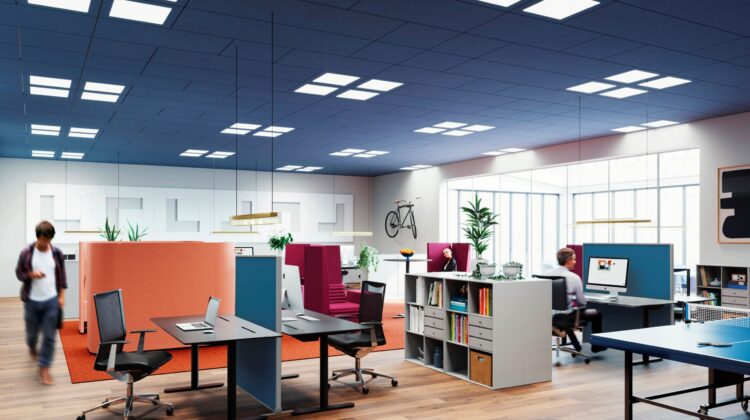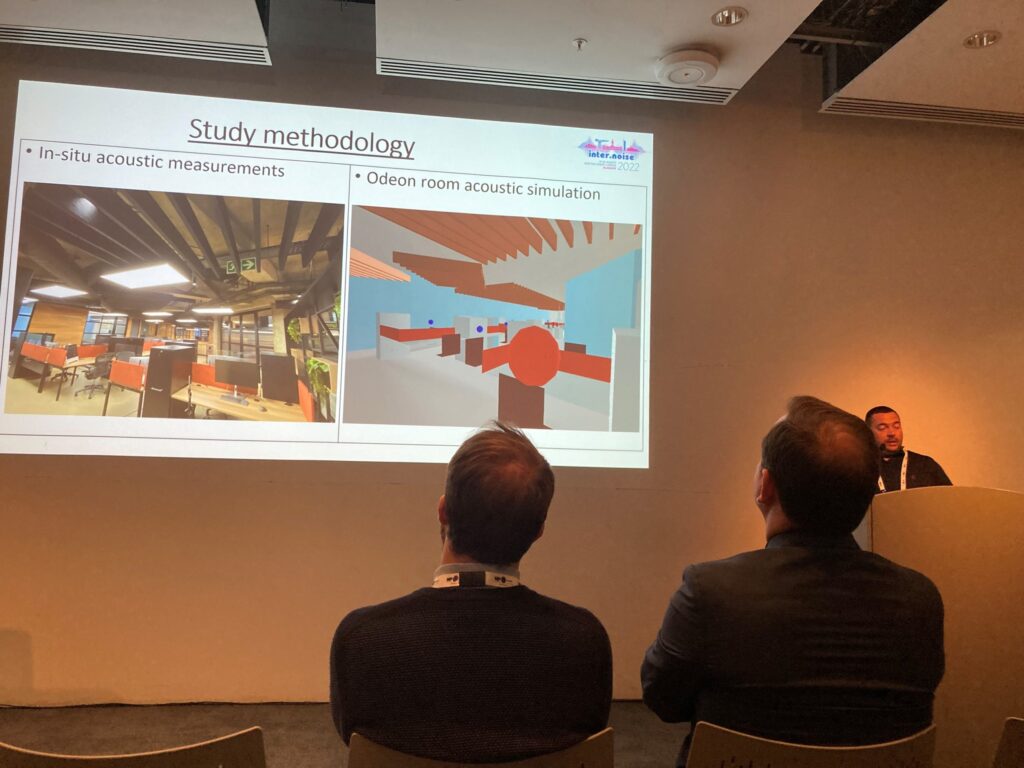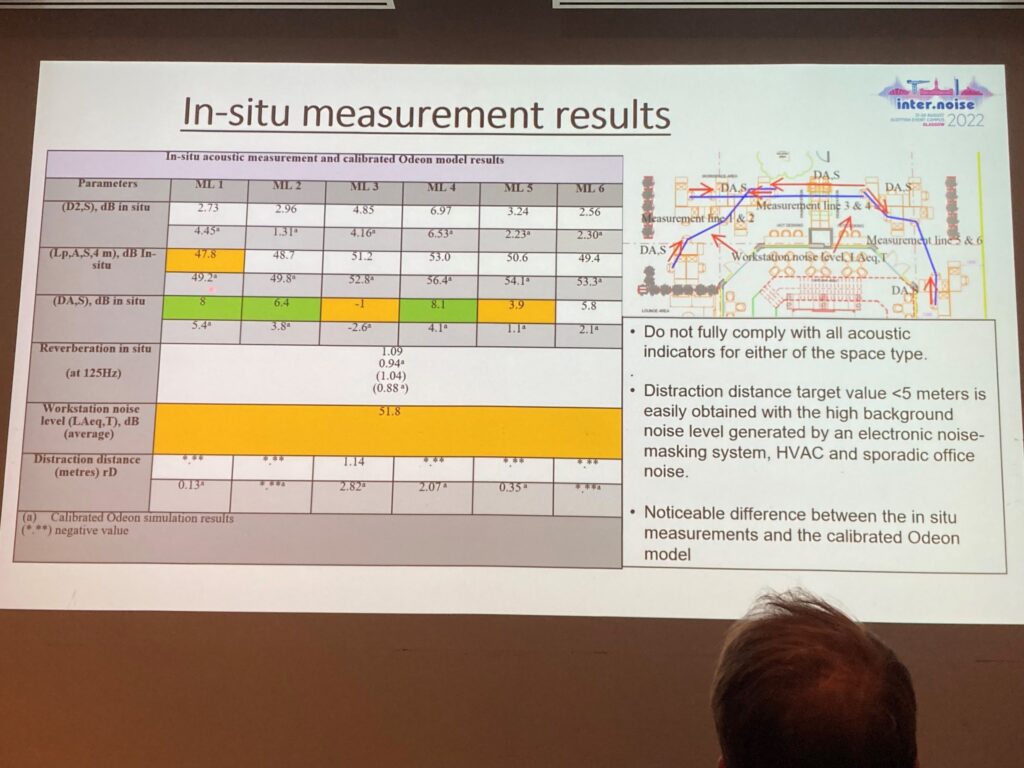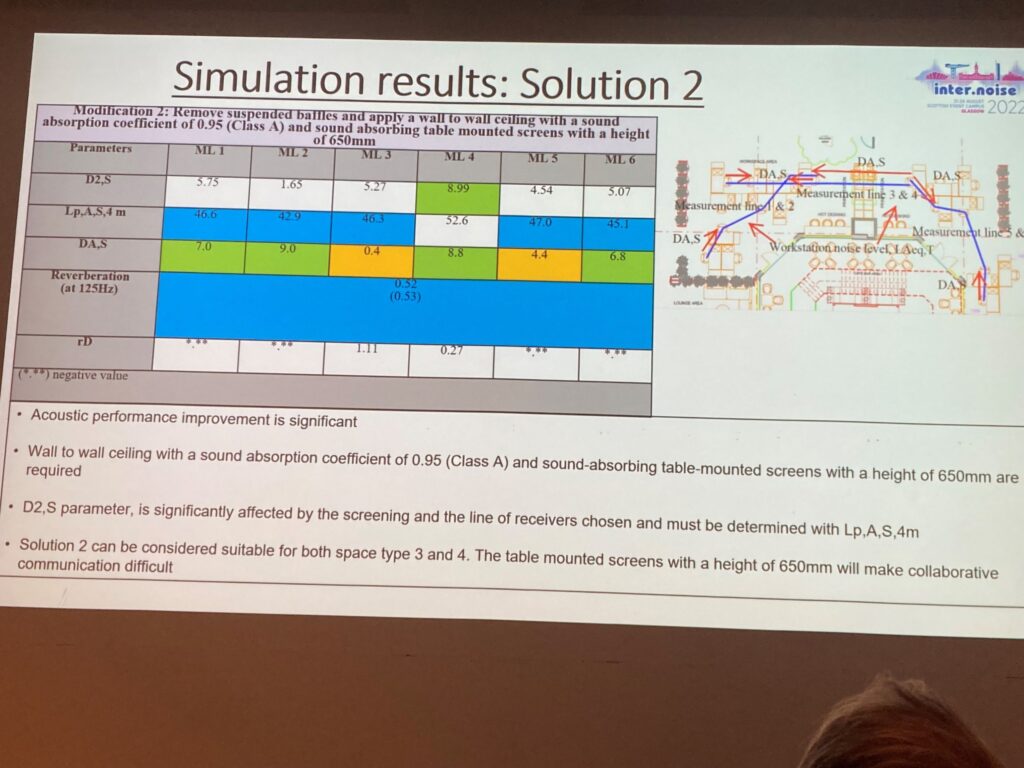
Conference proceeding by Michel Batista: Acoustic assessment of an open-plan office environment against the newly published ISO 22955 acoustic parameters
New ISO 22955 for open plan offices was a topic of a few research papers at Internoise. Michel Batista from Subsonic Designs showed interesting examples of in-situ measurements and simulations according to ISO 22955 and discussed if its recommendations are easy to achieve in contemporarily designed offices.
Newly published ISO 22955 is a more comprehensive and up-to-date approach to the acoustics of open plan – this is what the author outlined at the beginning. It’s setting, based on activities and easy-to-measure attenuation ( DA,S ), makes a good, complex framework and recommendations for what constitutes good acoustic quality in various open-plan office settings. The aim of the study was to check if its recommendations are obtainable in offices and how.

Study methodology
Out of all areas and layouts specified in ISO 22955 (we described it in detail here). Michel Batista’s study focused on two work-type settings: primarily collaborative work and sporadic collaborative work. Settings were located in an industrial open plan office, with hard floor and ceiling finishes. In situ acoustic measurements were taken to determine the real-life acoustic performance of the open plan office environment. Next, Odeon room acoustic simulation software was used to evaluate the impact of various acoustical modifications.
Six measurement lines were used to evaluate the in situ acoustic performance parameters of spatial decay, A-weighted SPL of speech at 4 meters, and distraction distance. The in situ attenuation of speech between workstations was measured between the nearest workstations on each measurement line.
Also acoustic modifications were introduced to determine the influence on the room acoustics:
- Solution 1: Sound absorbing screens with a height of 650mm on desks
- Solution 2: Baffles replaced with wall-to-wall ceiling with a sound absorption coefficient of 0.95 (Class A), sound absorbing screens on desks (h= 650mm)
- Solution 3: Baffles replaced with wall-to-wall ceiling with a sound absorption coefficient of 0.95 (Class A), sound absorbing screens on desks (h= 300mm)
In situ measurements results
The in situ acoustic measurement results indicated that acoustic indicators for the open-plan office case study do not fully comply with the target values. The recommended target values for in situ attenuation of speech between workstations, DA,S were only achieved for a few paths. In situations where there were no screens or appropriate distance between workstations such as (path ML 3, ML 5), the target value of DA,S was not achieved.
There was also a deviation of the in situ measurements and Odeon calibrated model, especially in attenuation of speech between workstations (DA, s). In situ field measurements produced higher attenuation values than modelled ones.

Acoustic modification results
- Solution 1 – desk screen. It appeared to give a very little acoustic improvement.
- Solution 2 – sound absorption (0.95) wall-to-wall ceiling and 650 mm desk screens:
Acoustic performance improvement was significant and it allowed us to achieve the target values for attenuation (Lp,A,S,4m) in most cases and for attenuation between workstations (DA,S) in a few cases. However, the practical limitation is that the desk-mounted screens with a height of 650mm could make collaborative communication difficult.

- Solution 3 (wall to wall class A ceiling and 300 mm screens) It will affect the acoustic performance of the space negatively by reducing the height of the sound-absorbing screens to 300mm.
Conclusions
The only possible design option to achieve the acoustic target values in studied example is highly sound-absorbing ceiling and screens with appropriate height between workstations and. In many offices it could be difficult to obtain, having in mind design trends, incl. low screens between workstations for easy communication.
Link to paper.
Link to Internoise proceedings.
Link to brochure on ISO 22955.

